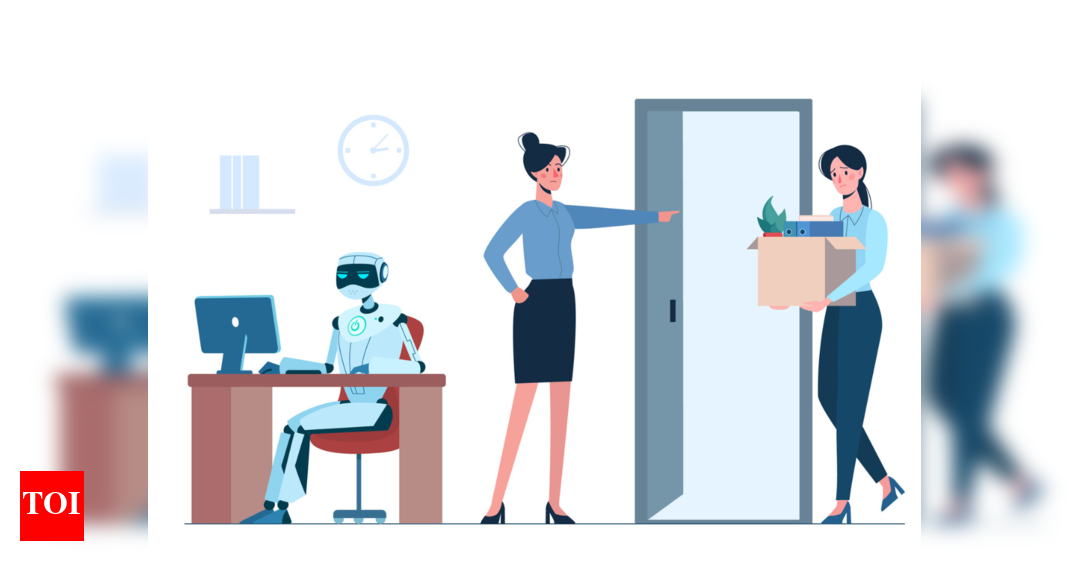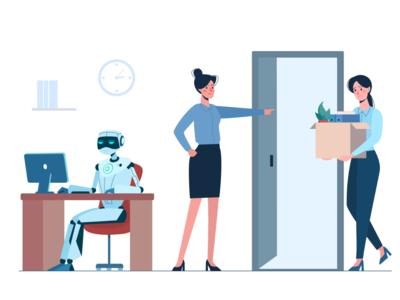
In a world racing towards artificial intelligence as the new normal, a former Google X executive is asking a question few want to confront: Will your job still exist five years from now?Mo Gawdat, who once served as Chief Business Officer at Google X and an author, has become a candid voice on the ethics, risks and future of AI. In a recent interview shared on YouTube, Gawdat delivered a grounded but sobering assessment of how white-collar and blue-collar jobs are being redefined, and in many cases, erased by machines that are no longer just tools, but thinkers.“Machines replaced labor,” he said. “And AI is going to replace the brain of a human.”This shift, he argues, is not hypothetical. It is already unfolding.
The quiet collapse of white-collar certainty
Gawdat points out that for decades, Western economies intentionally moved away from manual labor and manufacturing by outsourcing to developing countries. The idea was to build a “services economy”, one powered by information workers, analysts, designers, consultants and content creators.But in his words, “Knowledge workers are people who work with information and click on a keyboard and move a mouse and sit in meetings.” And now, “everything we produce can be produced by an AI.”He gives an example that hits close to home for many professionals. Imagine a person is given a plot of land and asks an AI to design a villa. The AI considers the land’s coordinates, user preferences, light requirements and desired materials. It returns a complete architectural plan in seconds.“What will the architect do?” he asks. “The best of the best architects will either use AI to produce that, or you will consult with them. But how many of them will remain?” This is the heart of his argument: AI will not just make workers faster, it will replace many of them altogether.
Two phases: augmentation and then replacement
To better explain the path ahead, Gawdat distinguishes between two eras: augmented intelligence and machine mastery.In the first phase, AI supports human productivity. Assistants, interns and professionals use AI tools to generate reports, brainstorm ideas or reduce manual tasks. “Now, the more the number of tasks get reduced, the more they’ll have the bandwidth and ability to do tasks like take care of your dog, or meet your guests,” Gawdat says. These are tasks based on human connection, not data.But the second phase is more disruptive. In the era of machine mastery, the AI completes the job from end to end, with no human in the loop. At that point, Gawdat believes, jobs will vanish at scale. “The job is done completely by an AI without a human in the loop,” he said.This transition will likely happen much faster for white-collar roles than it will for physical jobs.
Why blue-collar work may survive longer
While AI has already outpaced many white-collar workers, robots have not yet fully replaced human physical abilities. According to Gawdat, this is not due to a lack of ambition but a design bottleneck. “I believe they’re not ready because of a stubbornness on the robotics community around making them humanoids,” he said. “It takes so much to perfect a human-like action at proper speed.”He notes that while self-driving cars already operate in parts of California, robotics in warehouses and homes is still lagging. Replacing manual labor, he estimates, could take another four to five years, and even then, there will be delays in manufacturing enough robots at scale.“So that cycle will take longer. Blue collar will stay longer,” he says. But it will not be spared forever.
What about entrepreneurship?
One of the most revealing moments in Gawdat’s interview is when he challenges the assumption that everyone can simply upskill or become an entrepreneur.He recalls a conversation with Peter Diamandis and others who said the American public will pivot through resilience. “Seriously? You’re expecting a truck driver that will be replaced by an autonomous truck to become an entrepreneur?” he asks. “Please put yourself in the shoes of real people.”His point is not just about skills, but economic justice. “You expect a single mother who has three jobs to become an entrepreneur?” he says. “If our society was just enough, that single mother should have never needed three jobs.”
What must change now?
Gawdat’s strongest appeal is not to slow AI’s development, but to give it boundaries. “The best thing I can do is to put pressure on governments to not regulate the AI, but to establish clearer parameters on the use of the AI,” he says.He believes every AI product should be designed with an ethical mirror. “Do not invest in an AI you don’t want your daughter to be at the receiving end of,” he says, addressing tech leaders and investors directly.He also wants accountability in content. “If anyone produces an AI generated video or content, it has to be marked as AI generated.”
In the end, the future is personal
Beyond policy, his message circles back to something deeper. As intelligence becomes artificial, the value of being human must become more intentional. “Leave your phone, go out and meet humans,” he urges. “Touch people you know.”And when truth itself feels like it is being rewritten by algorithms, Gawdat reminds us to return to timeless ethics. “Treat others as you like to be treated,” he says. “That’s the only truth. Everything else is unproven.”For today’s professionals, students and institutions, his message is less about fear and more about preparation. The AI shift is not coming. It is here. Whether your job survives it will depend less on your degree, and more on your ability to remain usefully and ethically human.TOI Education is on WhatsApp now. Follow us here.








